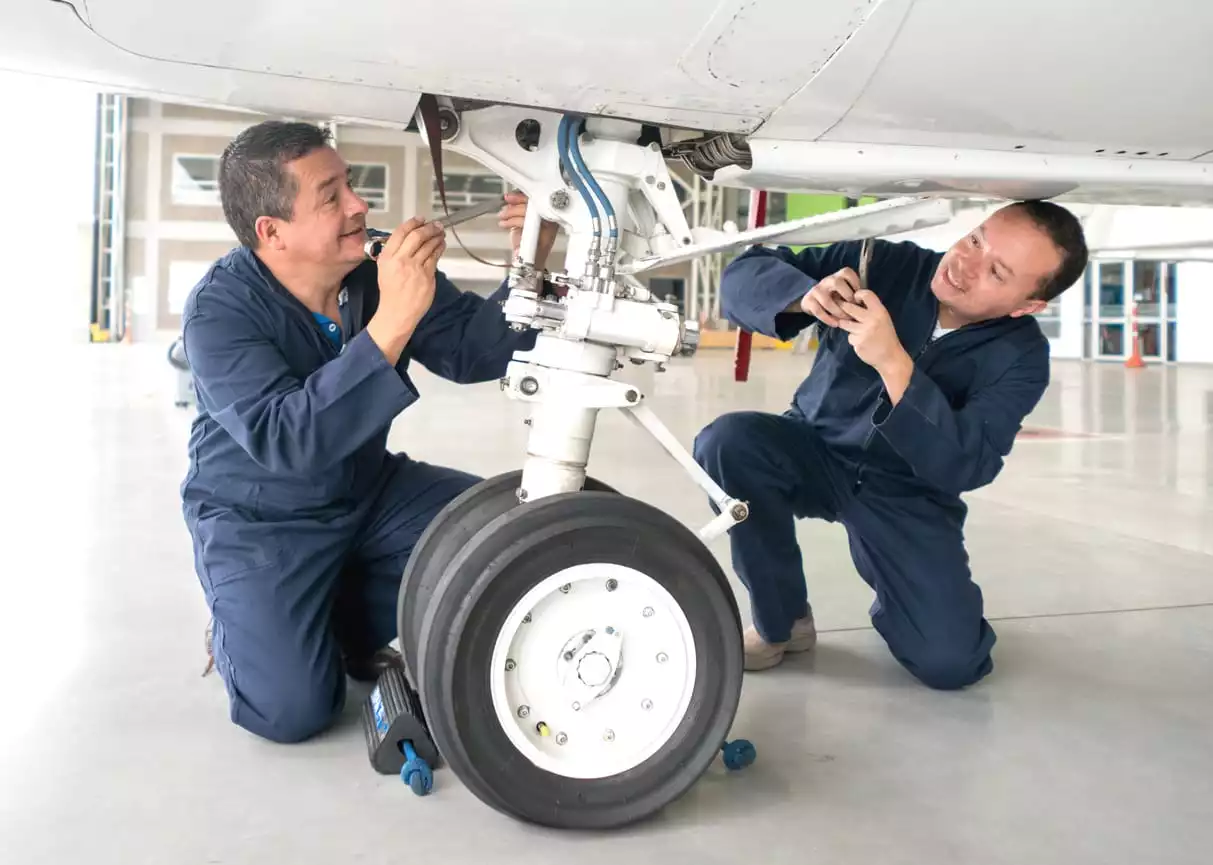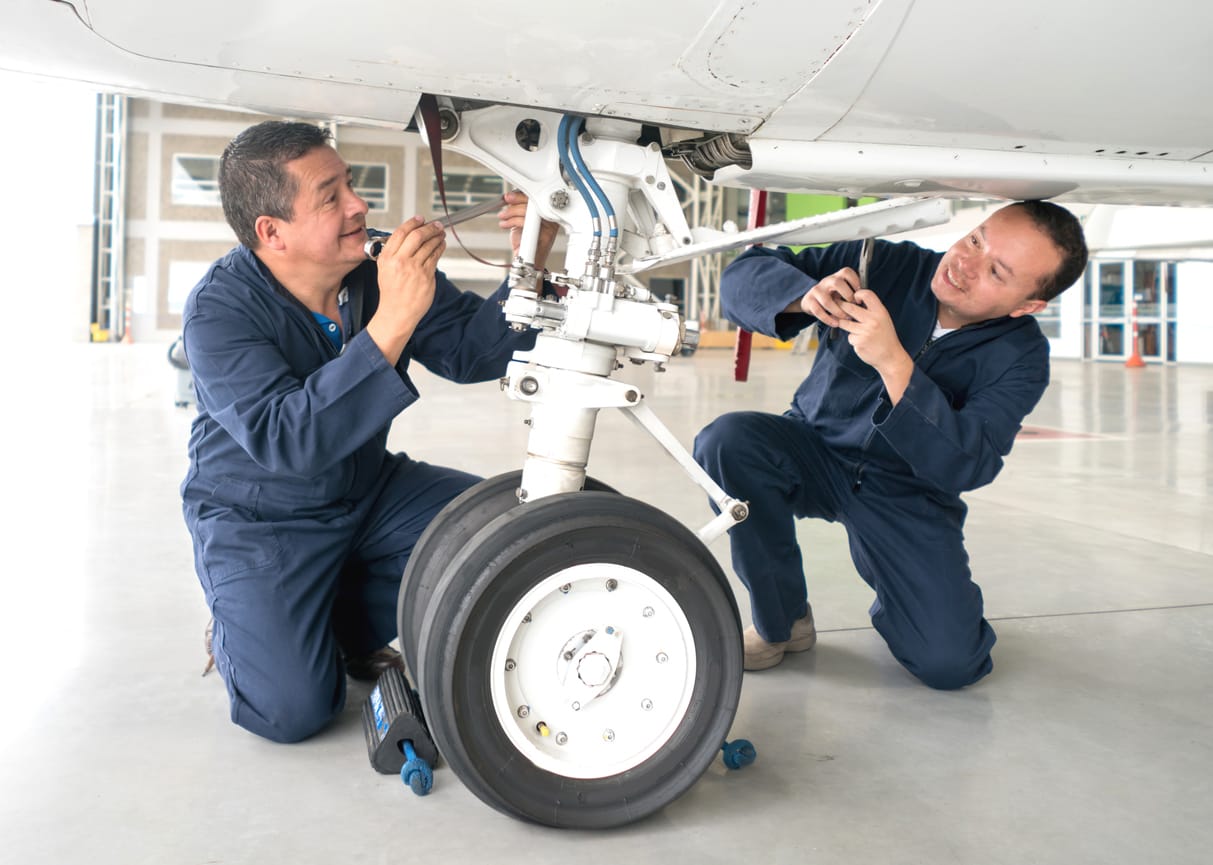Airplane maintenance is essential to ensure that the aircraft has no damage, is working properly, and can fly safely.
[lwptoc]
Most people understand that it is necessary to regularly service an automobile to keep it in good running condition. After all, well-serviced cars last longer and are less likely to experience a breakdown and they are also most likely safer. However, some new aircraft owners and pilots underestimate how much maintenance an airplane requires. Taking care of an airplane consist of much more than merely “fixing what’s broken” when a problem arises. On the contrary, preventive maintenance is a significant part of keeping an airplane happy and healthy.
Airplanes are at their best when in the air, and if they are ignored and left in hangars or tied to a parking space for extended amounts of time, damage can quickly follow. Responsible pilots and airplane owners should have at least a rudimentary knowledge of how their aircraft works, what its manufacturer recommends to keep it in good flying condition, and how to meet its basic and cyclical airplane maintenance needs.
Regular Airplane Maintenance and the Annual Inspection
Safe pilots perform a sort of maintenance check every time they get into an airplane. This takes place when they begin the walk-around portion of their pre-flighting procedure. When there is a single pilot in command, they perform the walk around. In the event of a crew of more than one, the first officer usually undertakes the visual inspection. It should take place no matter how small or large the airplane, and no matter how long or short the flight. During this task, the pilot carefully looks to see if there is any damage to the airplane. He or she ensures that the control surfaces are in good working order, that the engines have good airflow and are at the recommended fluid levels, the ports and vents are clear, and the alarm systems are operational.
In addition to basic airplane maintenance such as oil changes and tire changes, the FAA stipulates that even general aviation airplanes must undergo regular inspections, usually spaced by number of flight hours. They are all subject to inspection every 100 hours of flight time, as well as annually. These must be undertaken by an authorized professional. Sometimes flight schools and “heavy use” airplanes opt for what is known as a progressive inspection plan, under which inspections take place more frequently so as to minimize downtime. The annual inspection varies depending on the type of aircraft, but it usually involves checking transponders, testing instrumentation, and an audit of airplane maintenance records.
Maintenance and Federal Regulations
The Federal Aviation Administration (FAA) has clear expectations about the maintenance of commercial aircraft. In order to keep passenger airplanes as safe as possible, airlines and charter companies are required to perform certain maintenance actions and specified intervals. Usually, the more complex the airplane, the more comprehensive these rules tend to be. These are overseen by the FAA Maintenance Review Board, which specifies how often airplanes must undergo maintenance.
Depending on the aircraft type, usage might be measured in calendar time (months, years, etc.), number of flights, or flight hours. This means that at least some aircraft downtime is expected on a regular schedule. For the most part, commercial passenger aircraft are checked every few weeks, with more intense inspections and overhauls taking place perhaps twice a year or every other year. Some airplanes are subjected to what is known as a “3C” or “Intermediate Layover (IL)” check, in which inspectors look closely for evidence of corrosion or signs of stress on the airframe. If the airplane is due for a technological upgrade, such as new seatback monitors, this maintenance operation usually takes place during one of these longer periods when the craft is off the line.
The longer an airline aircraft is in use, the longer its maintenance track record. Eventually it must undergo a “D check,” also called a “heavy maintenance visit.” This is a massive, highly expensive overhaul and inspection of an aircraft, one which takes place every six to ten years. A D check can go on for weeks and involves, taking the aircraft apart and piecing it back together again.
How A Strong Aeronautical Education Can Help
Pilots who are well-educated in every aspect of aviation tend to have a well-rounded view of it. This means that while they become knowledgeable in their specialization of guiding the airplane and maintaining situational awareness. They also have a healthy understanding of air traffic control procedures, aviation meteorology, and at least a basic appreciation of maintenance.
This is attainable not only by taking courses in aviation maintenance and learning how to diagnose mechanical issues, but also by mixing culturally, socially, and professionally with those who are experts in aircraft maintenance. Those who attend aeronautical universities often find that this comes about naturally. Learning from other students is one of the most sustainable and grounding ways to become more familiar with mechanical phraseology, as well as the reality of what an airplane mechanic’s life is like.
Attending an aeronautical university which offers a strong aircraft maintenance technology, and other aviation programs, is beneficial in a number of ways. Program such as these are where students learn to become Airframe and Powerplant (A&P) mechanics, a designation which requires completion of FAA examinations.
Working from this position of understanding and respect can be extremely beneficial to a pilot as he or she enters the professional phase of his or her aviation career. Depending on what kind of job pilot graduates take, they may rarely mix with the people who keep their airplane in the sky. For example, while a single pilot in command of a small corporate jet is probably in constant communication with a certified mechanic, an airline pilot is relatively insulated from maintenance staff, and must follow strict procedures to file a maintenance request. The pilot might not meet the same mechanic twice, or have much detail on the actions the staff is performing. Coming to the cockpit with a comprehensive view of the expectations on the mechanic, however, can help the pilot foster a holistic view of the entire team.
Ready to soar in your aviation career?
Mr. Matthew A. Johnston has over 23 years of experience serving various roles in education and is currently serving as the President of California Aeronautical University. He maintains memberships and is a supporting participant with several aviation promoting and advocacy associations including University Aviation Association (UAA), Regional Airline Association (RAA), AOPA, NBAA, and EAA with the Young Eagles program. He is proud of his collaboration with airlines, aviation businesses and individual aviation professionals who are working with him to develop California Aeronautical University as a leader in educating aviation professionals.



